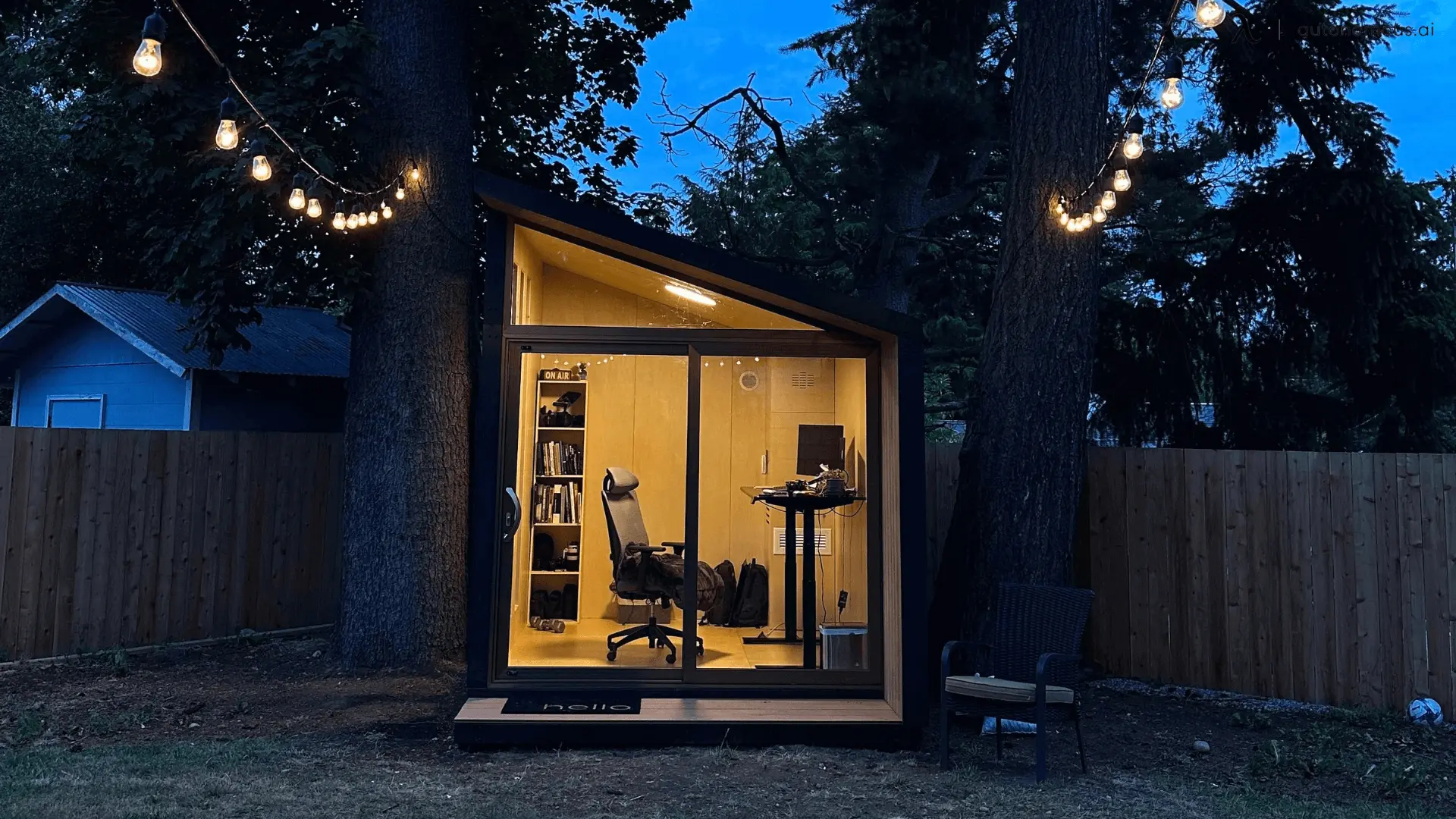
ADU Size Limit in California: Exploring Minimum and Maximum
Table of Contents
California's ADU scene is buzzing with possibilities, and we're here to guide you through the essentials. We'll break down the ins and outs of ADU size limits, putting the spotlight on manufactured homes in California, California ADU law, and the excitement surrounding prefab ADUs. It's your straightforward roadmap to navigating regulations and discovering the perfect fit for your dream dwelling in the Golden State. Let's make your ADU journey simple and exciting!
The Rise of ADUs in California
Several cities and counties in California have seen a significant increase in the construction of ADUs, driven by state laws that encourage their development. Here are some areas where ADUs are particularly on the rise:
Los Angeles County: With a population of over 10 million, Los Angeles County has embraced ADUs as a way to address housing shortages. The city's streamlined permitting process has made it easier for homeowners to build ADUs.
San Diego County: San Diego has been proactive in promoting ADUs through various incentives, including fee waivers and expedited processing. The county's ADU construction has surged as a result.
San Francisco Bay Area: The Bay Area, including cities like San Francisco, Oakland, and San Jose, has seen a rise in ADU applications. The high cost of living and limited housing supply make ADUs an attractive option.
Sacramento County: Sacramento has also seen an increase in ADU development, driven by the city's efforts to simplify the approval process and reduce barriers for homeowners.
General ADU Size Limits in California
As a starting point, California generally allows ADUs to be built up to 800 square feet with a 16-ft height restriction and a 4-ft setback requirement. However, variations exist based on the type of ADU and the location within the state. Following are the maximum ADU size in California for different types of ADUs:
1. Detached ADU
For those considering a detached ADU, such as a backyard cottage or a container home, California state law permits up to 1,200 sqft ADUs on most residential properties, subject to 4′ side and rear setbacks. It's important to note that certain cities and counties may have additional restrictions, considering factors like lot size, coverage, or the number of bedrooms.
For those looking for a turnkey option, a prefab ADU in Southern California offers a streamlined approach with pre-approved designs that comply with state and local codes. If a full ADU isn’t necessary but you still need a dedicated workspace, an outdoor office in California could be the ideal alternative, providing a private, efficient workspace without the complexities of full ADU regulations.
2. Attached ADU
Attached ADUs, like basement apartments or garage conversions, have a general rule that they cannot exceed 50% of the square footage of the main house and must not surpass the existing house's height.
3. Conversion ADU
Conversion ADUs, created by transforming existing structures like garages, sheds, or attics, usually have no maximum size limits, as long as the structure already exists. However, if converted to a Junior ADU (JADU), it must be under 500 square feet and attached to the main house.
4. Internal ADU
Internal ADUs, integrated into the existing floor plan of the main house, such as spare bedrooms or closets, have fewer general regulations, provided they remain within the pre-existing house.
Detailed ADU Size Limits by City/County
| City/County | Minimum Size | Maximum Size |
|---|---|---|
| Los Angeles | No minimum size specified | 1,200 sq. ft. or no more than 50% of the primary residence; detached ADUs up to 1,200 sq. ft. |
| San Diego | No minimum size specified | 1,200 sq. ft. for detached; attached ADUs limited to 50% of existing living area, up to 1,200 sq. ft. |
| San Francisco | 150 sq. ft. | 850 sq. ft. for one-bedroom; up to 1,000 sq. ft. for two-bedroom; JADUs up to 500 sq. ft. |
| San Jose | No minimum size specified | 1,000 sq. ft. for one-bedroom or studio; up to 1,200 sq. ft. for more than one bedroom; detached ADUs up to 1,200 sq. ft. |
| Oakland | 150 sq. ft. | 850 sq. ft. for one-bedroom; up to 1,000 sq. ft. for two-bedroom; detached ADUs up to 1,200 sq. ft. |
| Sacramento | No minimum size specified | Detached ADUs up to 1,200 sq. ft.; attached ADUs limited to 50% of existing living area, up to 1,200 sq. ft. |
| Santa Monica | No minimum size specified | 800 sq. ft. for lots < 6,000 sq. ft.; up to 1,200 sq. ft. for larger lots |
| Berkeley | No minimum size specified | 850 sq. ft. for one-bedroom; up to 1,200 sq. ft. for more than one bedroom |
| Pasadena | 150 sq. ft. | 850 sq. ft. for one-bedroom; up to 1,200 sq. ft. for two-bedroom |
| Fresno | No minimum size specified | Up to 1,200 sq. ft. regardless of primary residence size |
Understanding Local Regulations
While the state law sets minimum standards for ADU development, local regulations can be more specific and restrictive. It's crucial to check with your local planning department before initiating your ADU project. Online tools like this ADU Calculator can help determine specific ADU size limits based on your property and the ADU type.
For homeowners in Long Beach, it’s important to review the ADU in Long Beach to understand local zoning codes and approval processes. If you're considering an ADU in Riverside County, checking the ADU in Riverside County will help ensure compliance with county-specific guidelines. Similarly, those planning an ADU in San Bernardino County should explore the ADU in San Bernardino County for detailed permitting and zoning information.
Loopholes to ADU Size Regulations
If the existing ADU size limits don't align with your vision, there might be loopholes or exceptions worth exploring. Some cities and counties offer incentives or waivers for larger ADUs, often tied to affordable housing, senior housing, or historic preservation. However, these opportunities might entail additional requirements, such as design reviews, deed restrictions, or owner-occupancy, necessitating consultation with local planning departments and ADU professionals.
Determining the Best ADU Size for You
Ultimately, the optimal ADU size depends on your goals, needs, and budget. Consider factors such as the purpose of your ADU, the number of occupants, layout and design preferences, cost, feasibility, and market demand. Rental income-focused ADUs may lean towards larger sizes, attracting more tenants and commanding higher rent. Meanwhile, personal-use ADUs might prioritize coziness and efficiency over expansive size. Balance the trade-offs between size and quality, understanding that larger ADUs may offer more comfort but at a potentially higher cost.
Making the Most of Your ADU Space
Regardless of size, you can enhance your ADU space with strategic planning.
1. Don't Skimp on Windows
Windows play a crucial role in enhancing the appearance and feel of your ADU. They introduce natural light, ventilation, and views, creating a brighter and more spacious ambiance. However, it's essential to choose windows strategically, considering privacy, security, and energy efficiency.
2. Plan for Lots of Storage
Storage is vital in any living space, especially smaller ADUs. Plan for ample storage solutions such as built-in cabinets, shelves, drawers, closets, or furniture with hidden storage. Utilize vertical space, like walls, ceilings, or lofts, to maximize storage capacity.
3. Declutter Regularly
To create a more spacious and comfortable ADU, regularly declutter your space. Keep only items that are useful, valuable, or meaningful, and avoid accumulating unnecessary possessions. Donate, sell, or recycle items that you no longer need.
Why Choose Autonomous WorkPod
The Autonomous WorkPod offers a unique advantage over other brands with its all-inclusive setup, featuring a foundation and an assembly process that takes only 2-3 days. The price encompasses necessary elements such as windows, a door, and lifestyle interior features. The table below provides a detailed cost comparison, illustrating the exceptional value and convenience that come with choosing the WorkPod.
FAQs
1. How big can ADU be in California?
In California, the general rule allows ADUs to be built up to 800 square feet. However, specific size limits may vary based on the type of ADU and its location within the state.
2. What is the minimum ADU size?
While there is no specified minimum size for ADUs in California, they must include a living area, kitchen facilities, and a bathroom, adhering to the state's building standards.
3. What is the ADU maximum size?
The maximum size for an ADU in California varies by type. Detached ADUs can reach up to 1,200 sqft, while attached ADUs generally cannot exceed 50% of the main house's square footage.
4. Can I install a prefab ADU in California?
Absolutely! Prefab ADUs are a popular choice in California, offering speedier construction and cost efficiency. They are subject to the same size regulations, ensuring compliance with state laws. Read prefab homes in California to find options for your unit.
5. Can I have a container home as an ADU in California?
Yes, a container home in California is a viable option for ADUs. The same size restrictions apply, with detached ADUs allowed up to 1,200 sq ft, depending on local regulations.
6. What are the advantages of prefab ADUs in California?
Prefab ADUs offer quick assembly, cost efficiency, and design flexibility. They are an excellent choice for those looking to expedite the ADU construction process. This list of prefab ADU in California has ADUs that offer all the advantages that a good tiny house has to offer.
Conclusion
Navigating ADU size limits in California involves understanding regulations for tailored projects. Homeowners can align their ADUs with unique needs, from minimum and maximum size constraints to options like prefab and container homes.
Prefab homes offer speedier construction, aligning with California's dynamic lifestyle. Container homes provide a unique aesthetic within prescribed size limits. Creating an ADU involves finding the right balance between size, functionality, and compliance. Whether traditional or innovative, align the project with individual goals. Exploring possibilities within set limits allows homeowners to embark on a transformative ADU project to enhance their property and lifestyle.
Spread the word
.svg)













